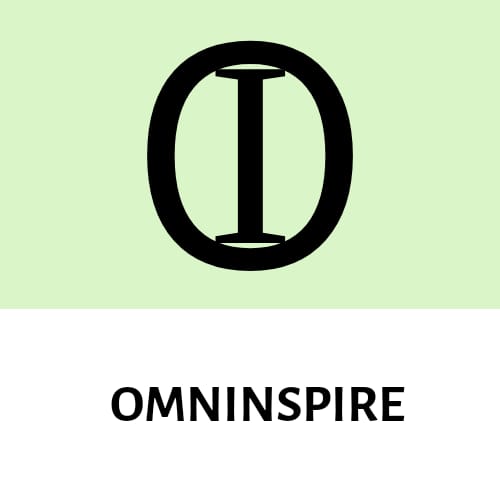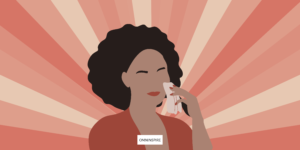In today’s fast-paced world, people often overlook the small things that can impact mental health. Casual creativity, such as doodling and daydreaming, provides a simple yet powerful way to nurture the mind. While these activities may seem trivial, they hold surprising benefits for overall well-being. In this article, we’ll explore how engaging in casual creativity, especially doodling and daydreaming, can boost mental health.
What Is Casual Creativity?
Casual creativity refers to spontaneous, low-pressure creative activities that don’t require significant effort or planning. Doodling and daydreaming fall under this category. Unlike structured forms of art or work, casual creativity happens naturally. It allows the brain to take a break and wander. This type of creativity provides an opportunity to engage the imagination without any particular goal in mind.
The Psychological Benefits of Doodling
Doodling might appear as a meaningless activity, but research says otherwise. Studies show that doodling helps improve focus and memory retention. When you doodle, your brain remains active without overwhelming itself. This relaxed state allows better absorption of information. For instance, one study revealed that participants who doodled while listening to information retained 29% more than those who didn’t.
Doodling also serves as a stress reliever. The repetitive motion of drawing shapes or lines calms the mind. It reduces anxiety by providing an outlet for nervous energy. Many therapists recommend doodling as a mindfulness activity, as it keeps you grounded in the present moment.
How Daydreaming Enhances Mental Well-being
Daydreaming is another form of casual creativity that benefits mental health. Often dismissed as a waste of time, daydreaming helps the brain process emotions and ideas. It provides mental downtime, allowing thoughts to flow freely. This mental relaxation fosters creativity and problem-solving.
In addition to sparking creative ideas, daydreaming can improve emotional regulation. When the mind wanders, it reflects on past experiences and considers future possibilities. This reflection helps you process emotions and manage stress. Studies show that daydreaming increases the brain’s ability to switch between different mental states. This enhances emotional intelligence and promotes self-awareness.
Doodling and Daydreaming Boost Cognitive Function
Casual creativity doesn’t just benefit emotional health—it also improves cognitive function. Both doodling and daydreaming stimulate brain regions responsible for thinking, memory, and attention. Engaging in these activities helps strengthen neural connections, enhancing mental agility. Doodling enhances focus, while daydreaming boosts creativity and problem-solving abilities.
Interestingly, people who allow themselves to daydream often return to tasks with renewed focus. Similarly, those who doodle while processing information can absorb and recall it better. Casual creativity sharpens both short-term and long-term memory, making it a valuable tool for everyday productivity.
Why Casual Creativity Reduces Stress and Anxiety
One of the most significant benefits of casual creativity is its ability to reduce stress and anxiety. In today’s digital age, people constantly face distractions and pressures. Casual creative activities like doodling and daydreaming provide an escape from this chaos. They allow the mind to reset, promoting a sense of calm and well-being.
Doodling helps people regulate their emotions by offering a non-verbal outlet for self-expression. When individuals focus on creating small, simple drawings, their anxiety decreases. Similarly, daydreaming gives the brain a mental vacation, which can prevent burnout. It helps process overwhelming emotions in a safe, constructive way.
How to Incorporate Casual Creativity Into Your Daily Routine
You don’t need special skills or tools to benefit from casual creativity. It’s easy to integrate doodling and daydreaming into your daily life. You don’t need to create a masterpiece—just allow your hand to move freely on the page.
- Keep a Notebook Handy
Carry a small notebook or sketchpad to doodle whenever you’re stressed or need a break.Focus on simple shapes or lines without aiming for perfection. - Schedule Creative Breaks
Set aside a few minutes daily for doodling or daydreaming, especially during work breaks. Short, intentional breaks refresh your mind and boost focus. - Create a Doodling Space
Keep paper and pens ready at your workspace for quick doodling when needed.
Use it when you’re stuck on a problem or need a mental break. - Doodle During Meetings
Doodling during meetings or calls helps improve focus and memory retention without being distracting. - Allow Mental Breaks for Daydreaming
Take brief mental breaks during routine tasks like walking or having coffee to let your mind wander. This helps process ideas and reduces stress. - Relieve Stress
Turn to doodling or daydreaming when stressed. These activities can calm your mind and help you return to tasks refreshed. - Use Transitions Creatively
Doodle or daydream during small moments like waiting or commuting instead of checking your phone. - Mix With Other Hobbies
Add doodles to your journaling or reading to enhance relaxation. Thoug it is hard to keep up with your hobbies as an adult, we would highly reccomend you to have one.
Daydreaming can also be incorporated into your routine. Take short mental breaks throughout the day to let your mind wander. Whether you’re walking, drinking coffee, or sitting in a quiet space, give yourself permission to daydream. These small breaks can enhance creativity and reduce stress.
The Role of Casual Creativity in Mindfulness
Doodling and daydreaming can also serve as mindfulness practices. Mindfulness encourages being present and engaged with your thoughts and surroundings. Doodling allows you to focus on the present moment without overthinking. This mindful activity keeps your hands and mind busy, reducing anxiety and helping you feel grounded.
Similarly, daydreaming allows for mental exploration. Instead of forcing yourself to concentrate on one thing, daydreaming lets your mind flow naturally. This kind of mental freedom can lead to greater insight and emotional clarity.
Why Casual Creativity Matters for Mental Health
Incorporating casual creativity, like doodling and daydreaming, into your life can have profound mental health benefits. These simple activities enhance cognitive function, reduce stress, and improve emotional regulation. By allowing the mind to wander and engage in low-pressure creativity, you foster mental agility and well-being.
Whether you’re dealing with stress, anxiety, or just looking to boost your creativity, casual activities like doodling and daydreaming provide a healthy outlet. As research continues to explore the relationship between creativity and mental health, it’s clear that small creative practices can lead to big emotional and cognitive gains. So, the next time you find yourself doodling or daydreaming, embrace it. Your mind will thank you.







